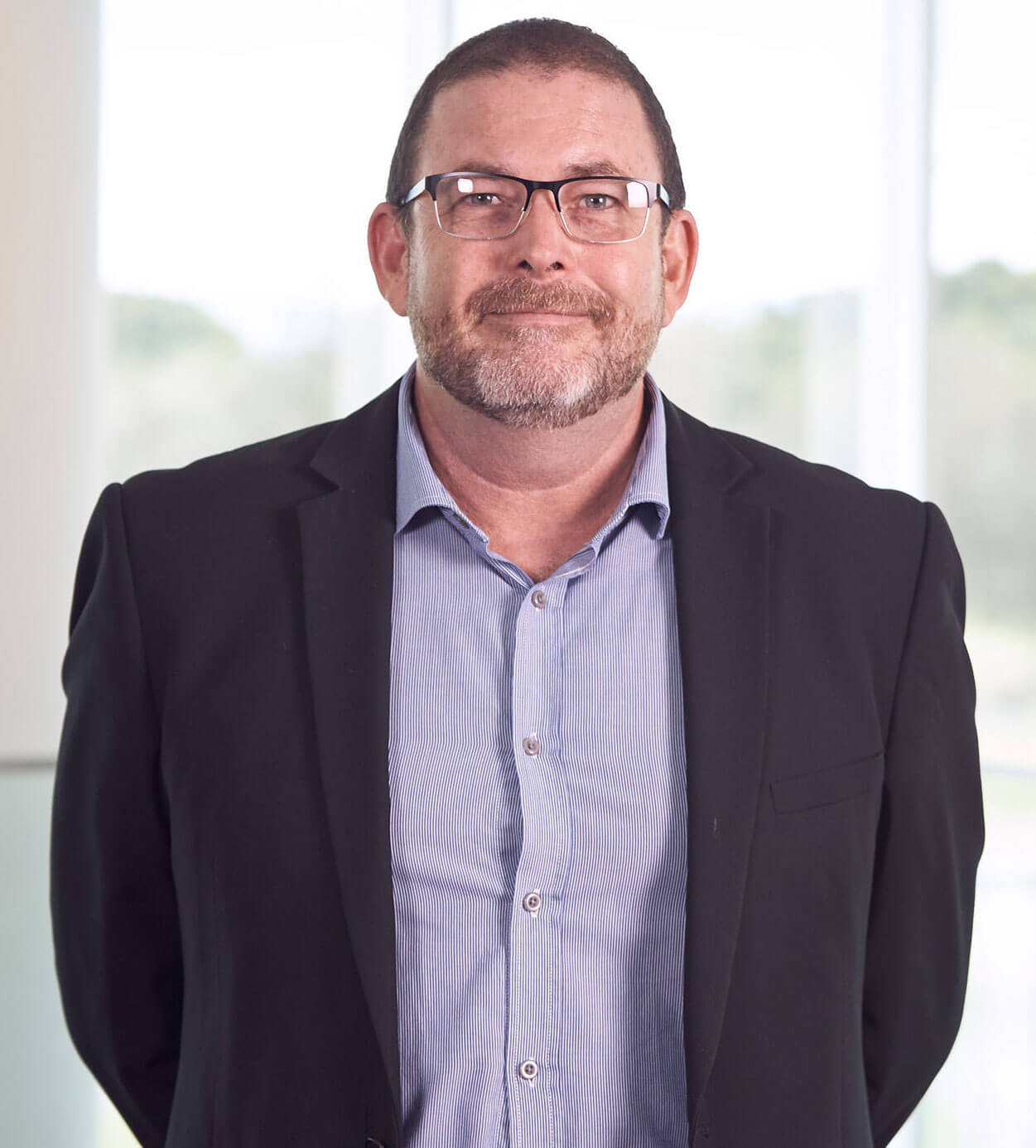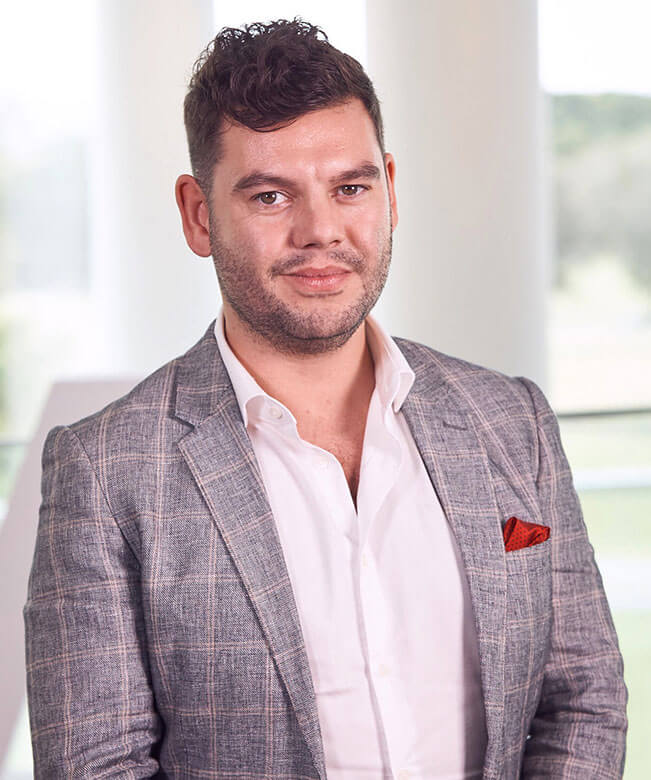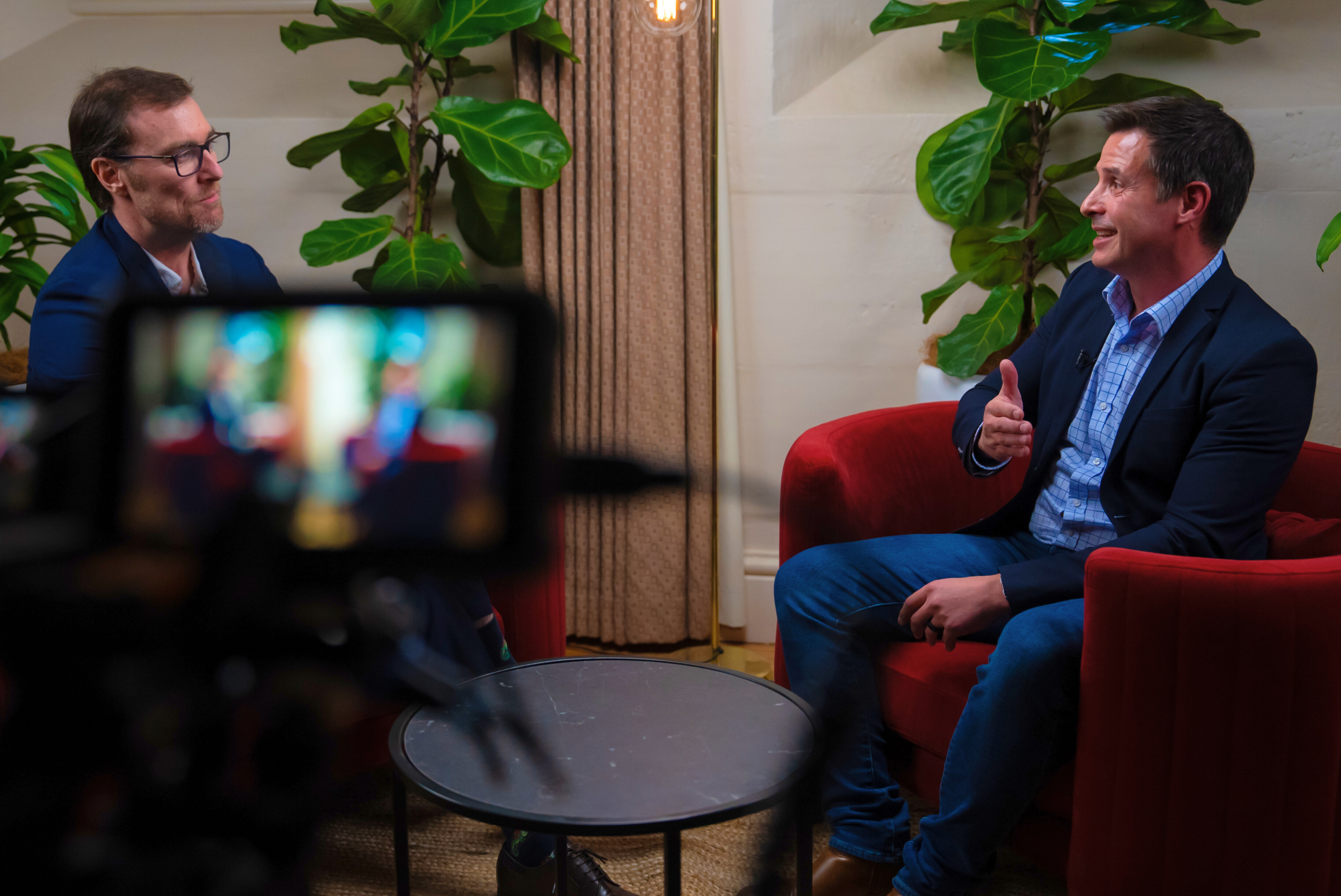Follow the subsea cables to business transformation: An interview with the Lead Advisor of Australia’s fastest telecommunications connection to Asia
Michael Whereat shares his experiences working around the emerging innovation and entrepreneurial network that is evolving on the Sunshine Coast.Michael Whereat is currently leading the terrestrial build of the SCIBN (Sunshine Coast International Broadband Network). This project, publicly announced in early September 2018, will deliver the first optic fibre international connectivity outside of Sydney by Q1 2020. Since 2013, Michael has led the development of the Sunshine Coast Smart City Framework and has overseen the implementation of the first three-year Smart City Implementation Program. Michael has worked in various roles within Sunshine Coast Council and the former Maroochy and Caloundra Councils from 1999 to the present. Until November 2017, Michael was also President of the Australian Smart Communities Association and the organisation he co-founded as the Broadband Today Alliance in 2011.
Matthew Hanley, Partner at ADAPT talks one on one with Michael at ADAPT’s Connected Cloud & Data Centre Edge to discuss The Sunshine Coast Council’s work around International Connectivity via Submarine Cable, their evolving Smart Cities program and the emerging innovation and entrepreneurial network that is evolving on the Sunshine Coast.
Matthew Hanley:
Today I’m joined from Michael Whereat from the Sunshine Coast. He’s doing a lot of interesting work. He’s been presenting today at the Connected Cloud & DC Edge. Michael, if you want to start by introducing who you are and what you do, and maybe then going into what kind of discussions you’ve been having today.
Michael Whereat:
My name is Michael Whereat, I work for Sunshine Coast Council currently looking after two different distinct areas. I’m Lead Advisor in a technical sense for the submarine cable build that Council’s doing. That’s about the terrestrial cable landing station, the beach manhole, horizontal drilling, and then all of the backhaul connectivity for that project, which is part of a wider one for Council. That’s a key outcome and for the last five years, I’ve been Council’s lead for our Smart Cities program. They both combine together but ultimately two roles at the moment and a lot of challenges with that.
Matthew Hanley:
You mentioned the subsea cable there which is going to make a big impact on businesses here in Australia. You presented on it this morning. What kind of points did you go into this morning with the technology leaders who were here on the Gold Coast?
Michael Whereat:
Well, when we’re looking at an audience of cloud, edge, data centres and people with an interest in IT and in international connectivity.I was really making the point that first of all, Sunshine Coast Regional Council is making a disruptive challenge to the existing arrangements around international connectivity. We’ve partnered with RTIC, an international firm that’s building from Japan to Guam to Australia, to Sydney, and we’re building a branching unit into the Sunshine Coast. Instead of just having the nine cables coming into Sydney we can now actually start to see an alternative location, providing an alternative space so that we can actually have redundancy and some competition in Australia. And providing that benefit through the Sunshine Coast, Southeast Queensland and the wider Queensland space. So that’s a unique and disruptive thing that Council’s doing because we’re intervening in the marketplace because it wasn’t delivering it for Australia in the first place. We’ll set it up and facilitate it, then step back and allow the market to continue to deliver it into the future.
Matthew Hanley:
A bit of a shout out to Brett Herbert who’s one of our technical advisers at ADAPT. He’s been saying for a while if you follow the subsea cables you’ll really see where the business is starting to evolve, so do you imagine there being a lot of new generation happening where you guys are?
Michael Whereat:
Look, I often describe Sunshine Coast as at minus five. There’s no international submarine cable infrastructure, we don’t have a major Tier 3 N+1 data centre, we don’t have the industries that hang off it, because it’s not here yet. We’re a regional area, traditionally a tourism location, retirement, lots of investment in property. How do we diversify that and bring knowledge and professional services to the fore?
By bringing the international submarine cable in, building for four transmission cables, not just one, we’re saying this is a serious alternative and no we’re seeking a data centre investor. Then as that construction occurs we’re expecting to see the flow through of other industries coming in that we haven’t previously had. So when you look at economic development generally to be able to diversify the economy, to broaden and deepen, makes your more sustainable and resilient. In the digital century that’s more important than ever.
Matthew Hanley:
So it’s a start for good things to come it seems. International connectivity as well, that’s gonna be a big play for you. I believe there’s a new CBD project that you’re going to be evolving. What does that look like, where is that going to go?
Michael Whereat:
We’re connecting also to Sydney, providing an alternative path and redundant path to Sydney is a good outcome. Connecting to Guam, to Hong Kong, to Tokyo and the West Coast of US gets us Asian markets and North America. So the vast majority of the emerging economy in Asia and the 80% or greater of where data centres are for the Internet. Combine that with our greenfield city centre where we’re taking a former golf course and creating the new city centre for the Sunshine Coast means that we’re actually able to flow over from international connectivity to 1 gigabit symmetrical services from the NBN, looking at campus connectivity for those who are interested and then providing smart cities. So, all of our light poles are now smart poles that connect to the fibre, we can connect CCTV, IoT devices that haven’t even been created yet, over the next fifty to a hundred years that we need those to work. All of the developments have fibre from smart cities connected to them so it’s really a case of leapfrogging the perception of a regional centre into a digital capital city to meet the digital century.
Matthew Hanley:
Interesting. I was chatting with the Chief Digital Officer of Ipswich earlier today and we were talking about customer data and building new services and products to give better experience. Is there a play that you have already within that area? And then how are you going about it?
Michael Whereat:
There’s an expressional round, data being the oil of this century. Understanding how to do it, being secure about it and anonymising data so you aggregate to make informed decisions. We use over 36 networks with over 220 access points for WiFi to understand the movements of people across the area. It might sound a little bit Big Brother but because we anonymise that information we’re really just simply understanding movements and flows and times. That helps us with planning events like the Caloundra Music Festival and New Year’s Eve events, helped and planned by having that information and even getting down to capital works planning, understanding the width of paths for people to walk along, where people are actually going.
And then when you get down to doing urban streetscaping Where do you put a pedestrian crossing? Where people are actually crossing the road and the best way to do that is through this anonymized data analysis. So harnessing those simple pieces of information around specific locations, combining that perhaps with where the ambient temperature is much cooler because we’ve got trees planted, reflects why we need to move towards a heavily vegetated urban environment that gives a much better experience.
The quality of air space and a whole range of other factors that, whether it’s waste management, we have sensors in our public waste bins so that we only empty when they need to be emptied. That saves us money and fewer truck movements during times when people are using that space means better experiences, lower truck movements means lower CO2, more sustainability outcomes. Individually it’s not the winner, but as you take all of those components and you notice the focus comes to savings, time, efficiency, people-centric, community outcomes. All of those things combine to make a smart city where IoT and other devices support but don’t lead the decision as to what we actually do.
Matthew Hanley:
Sounds like everything has an IoT sensor on it or something though because everything’s connected, everything’s going to the edge, there’s data coming in from everywhere now for you, whether it’s from garbage disposal to traffic lights to traffic flow to what pedestrians are doing and CCTV. There must be a lot of data coming back to you. How do you manage all of that?
Michael Whereat:
There are two parts to that. First, the data. We’ve realised over the last couple of years that even though we’ve got over 3,000 public waste bins, we only really need to have sensors on about 300 of them, so 10%. That audit process is helping to inform where our investment goes because it’s actually demand-focused and outcome-driven. Once we start to weed down and focus on where that benefit comes from and the data flowing in, it’s really critical that it’s actually high quality and informs either a decision-based outcome or has downstream benefits that relate to what we’re seeking to achieve. Ultimately that comes to achieving a more sustainable region, a better experience for the community, greater efficiencies in what we’re doing, or where it makes sense, some revenue generation.
So, it’s about understanding how we get this data lake coming towards us of different sources, storing it and being secure. Then actually taking an intelligent process around how we extract and derive benefit from that, both in real time and with time series data so we can correlate against previous years and map and plan towards the future, being able to use that data to be able to inform where we’re seeking funding for new roads or different sources of revenue. Or not so much revenue but grant funding, where we can say we need to have this funding and we need this prioritised because we’ve actually got the facts to back this up.
The other way we can use data is quite often squeaky wheels in the community with the oil from the information we can actually respond to or support what the community is saying and then make that investment decision quicker to prioritise where we’re putting our capital works and when we need to spend. All of those ways of trimming what we do mean that our spend can be more refined. When you’re spending somewhere between $180 million and $00 million a year on capital works, every percentage point that we can reduce in those expenses and delay to the future or prioritise forward because we need it now, that’s where you’re trimming the sales and improving your outcomes. One per cent benefit, that’s like the sporting outcome for athletes isn’t it so that one per cent is really what we’re focusing on. When we can get more that’s a great outcome.
Matthew Hanley:
And that’s really where the difference happens as well. How important has that relationship become now with strategic partners and with technology providers and the IT team, getting that right? As a tech leader, you need to be relying on these services and these organisations. How has your relationship with those providers evolved and where is it going?
Michael Whereat:
There’s a couple of things. We use a smart centre at Caloundra and we’ll have other spaces over time, but essentially being able to actually demonstrate to the public openness. The black box disappears, we can explain what we’re doing. We can invite the IT industry to come and show us and then provide the opportunity for these trials to exist.
First of all, we move from what the people and what the problem is so we don’t start with ‘Oh we want to trial your tech’, we actually start with people and the problem. Once we actually understand the scale of the problem, the value associated with it, and the likely benefits associated with trialling something, then we actually work with the industry and because we’ve done that early phase we’re informing the questions we’re asking and the assumptions we’re seeking from what they’re doing.
So we’re really seeking to convene the marketplace and say to the providers we need your products to do this for us, are you prepared to come and showcase how that can do it. We have a series of 18 IT-related expectations around interoperability, security. That sets our expectations an in our evaluations we tick those off or make a note as to whether the product has reached that level of maturity.
We’re changing the way in which we’re procuring solutions because we’re making a more intelligent assessment of what we need in partnership with the community and then in partnership with the technology firms. So, it’s no longer a case of purchasing based on their glossy brochure that promises to do things. We deploy at scale when we know the product will do what we want it to do and it will actually provide the solutions we need it to do, where and when. So getting the best outcome for our community by a small lower entry cost and then getting the best outcome over time.
Matthew Hanley:
Awesome. I think another equally important piece of the puzzle is the technology talent. Sunshine Coast is far away from two big hubs which are Melbourne and Sydney. How are you attracting the right talent and what work needs to be done in that area? My personal opinion is that Australia is a little bit behind getting, attracting the right talent. How are you guys going about that?
Michael Whereat:
If we accept your statement as Australia’s a little bit behind other regions and when you go from Sydney and Melbourne and perhaps Brisbane, then coming out to regions is harder to attract that talent. One of the key things that you’ll see as a differentiator with the Sunshine Coast is that we’re laying out a regional economic development strategy. We’re focusing on knowledge and professional services, we’re delivering projects like the submarine cable, our smart city framework spells it out to the industry. There’s an emerging innovation and entrepreneurial network on the Sunshine Coast that, because of the environment that we’re providing. We have a sandbox space for trialling in Maroochydore City Centre and other locations which means that we’re attracting people who ordinarily wouldn’t go to a region because of the way we are interacting and disrupting the marketplace.
We’re creating that attraction beyond, you know maybe they might get $200,000 in a capital city but they’re prepared to come and work for less in our region because they know they can achieve perhaps some scale and entrepreneurial outcomes that are beyond what they can do in those locations. So we’re really addressing what you’re saying. There is an issue, but because of the way we’re presenting the marketplace we’re attracting people that we wouldn’t ordinarily and that’s how you have to go above and beyond. I’m sitting here as a local government representative as opposed to a business representative, but I suspect the issue is the same for business as it is for local government. If you can convene the marketplace and attract people to it then you can achieve outcomes that you may not have under traditional circumstances.
 WATCH
16:23
WATCH
16:23




























